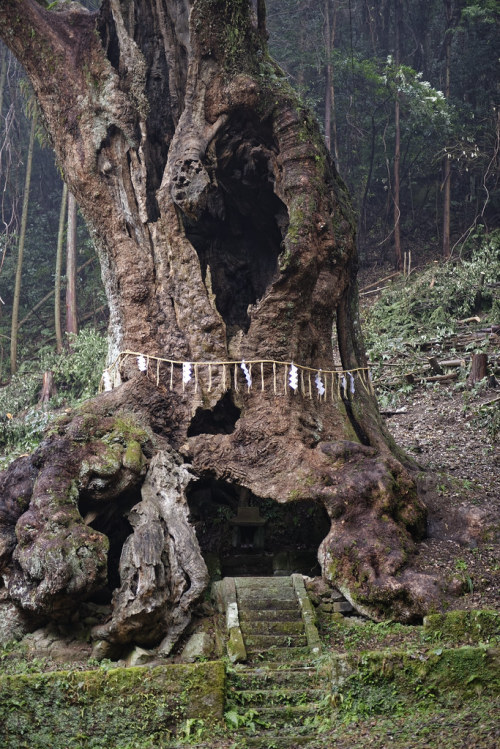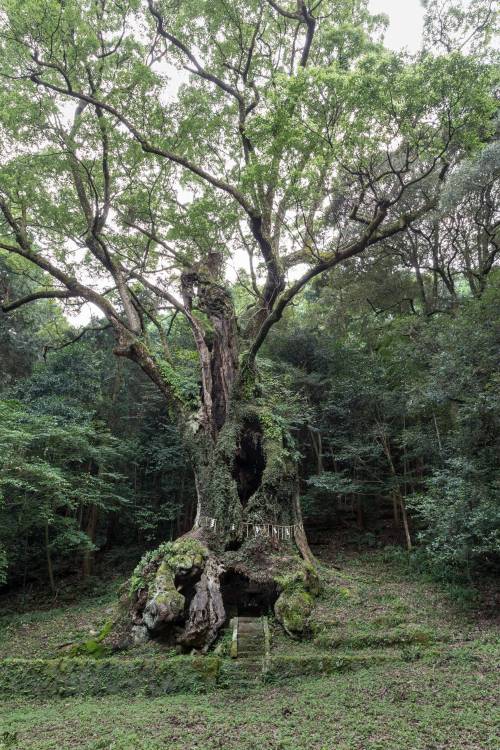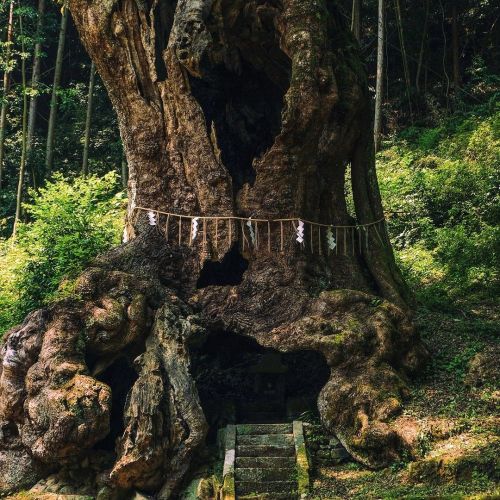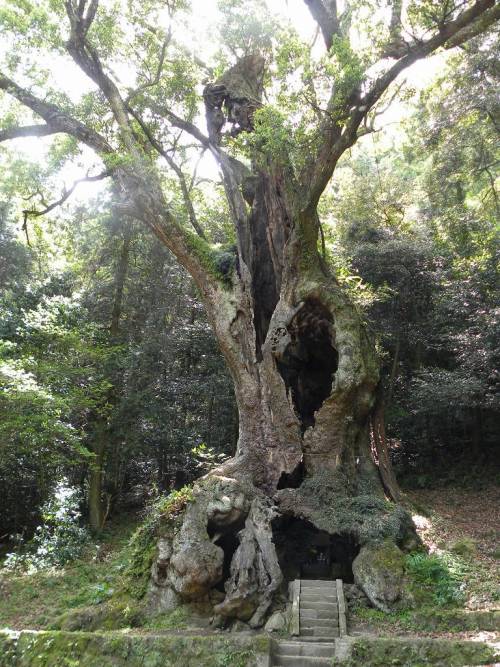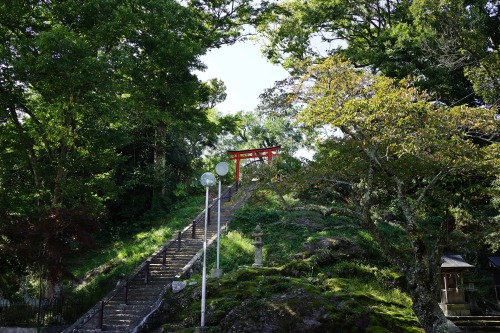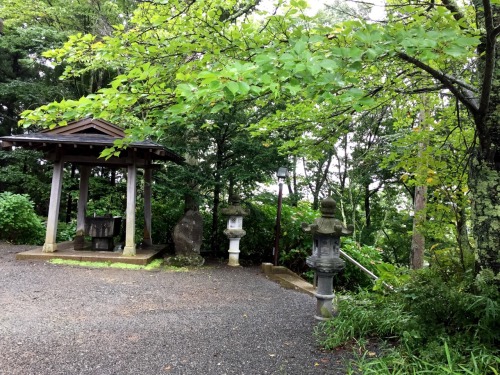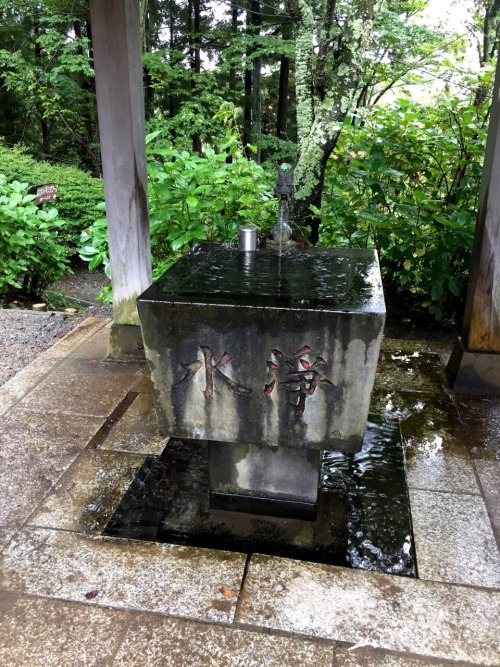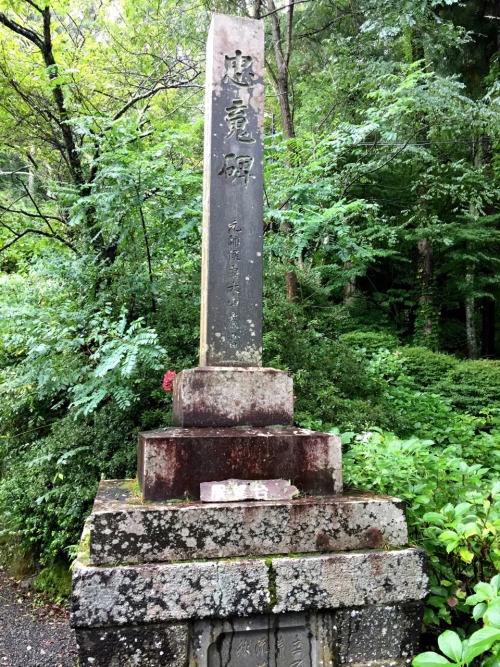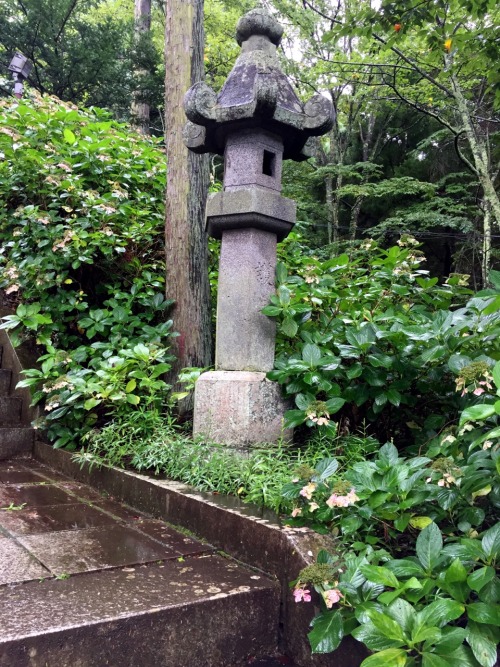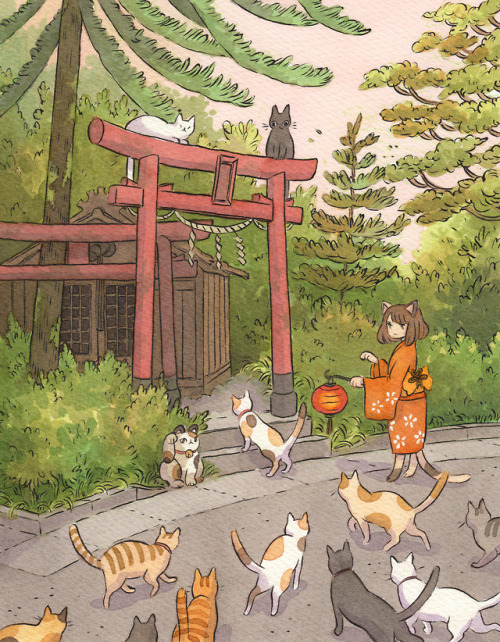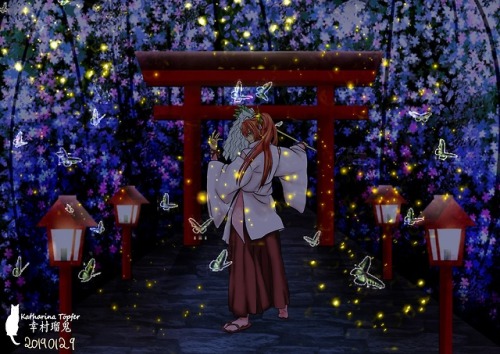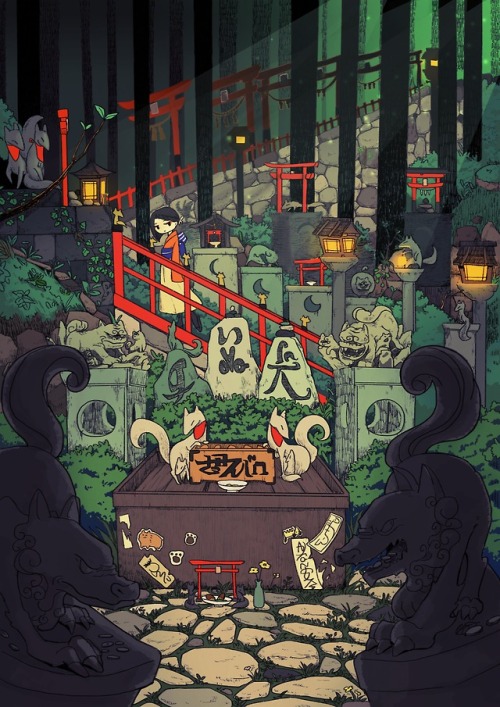#shinto shrine
The Sacred Tree of Takeo Shrine (Takeo’s Okusu Tree)
Location: Outside Mifuneyama Rakuen GardenOver 3000 years old, this camphor tree is the 7th largest tree in Japan. It is 30m tall with a trunk circumference of 20m, its branches span 30m wide from east to west, and 33m wide from north to south. This is the sacred tree of Takeo Shrine, which was built in the Nara period (735 CE). The roots of the tree resemble the feet of elephants and are wrapped in rough bark, with their central section split open near the surface of the ground. Inside is a gaping cavity with an area of 12 tatami mats, which houses a stone shrine deep within.
Post link
By Ghia Vitale

“The fire of passion and the power of prayer will defeat evil! I’m Sailor Mars, of the red high heel!”
As a Chaote, I believe any form of media can be a valid source of spiritual wisdom as long as it resonates with you. Sailor Moon is no exception and it has impacted my witchcraft practice significantly.
Sailor Mars has always been special to me. It’s not just because I had a crush on her, either—she fascinates me as a character. When she isn’t fighting for justice, she’s living her life as Rei Hino, a student in junior high school. Her entry in the Sailor Moon Fandom Wiki suggests that “Ray of Fire” is a literal translation of her name.

Sailor Mars embodies Mars perfectly. She has an assertive, fiery personality and doubts the leadership abilities of Usagi/Sailor Moon. She isn’t afraid to wage war when it’s necessary. When you mess with her, prepare to face Mars’ red hot temper. She exemplifies so many personality traits of Mars that once I actually opened my first occult book at 12, I read the description of Mars and already felt familiar with its energy. Watching her work with fire inspired me to cultivate my own abilities.
Sailor Mars is the most spiritual of all the sailor scouts. As Rei, she lives and works at a Shinto shrine called Hikawa Shrine. She runs the shrine with her grandfather and serves as a miko. (“Miko” is a Shinto word that refers to a shrine maiden.) She developed her psychic powers by directly working with the Sacred Fire at the shrine. Although working with the Sacred Fire empowered her, others viewed her behavior as strange and avoided her because of it. This makes me relate to Rei more than the other sailor scouts: As a high school freshman, I lost some friends once they found out I practiced witchcraft. Others thought I was weird for pursuing the occult and stayed away from me.
While fighting, Sailor Mars throws Ofuda at youma (which is a Japanese word for “demons” and refers to enemies in Sailor Moon) while commanding evil spirits to disappear. These are Japanese paper charms with scriptures that are good luck. You’ll find them at shrines all across Japan. Seeing Sailor Mars work with these charms awakened me to the magickal power of writing symbols on paper and burning them.

Since then, I’ve designed a lot of personalized sigils that I charge/manifest with fire. Sometimes, when I’m meditating with a piece of paper in my hand, I’ll feel like how I imagine Sailor Mars does when she’s focusing her energy. When I actually set the paper aflame, I feel like I am throwing my own psychic Mars Fireballs.
You know how witches have familiars? Well, Rei has 2 guardian crows named Phobos and Deimos after the 2 moons of Mars. These crows provide her with insight, assistance, and empowerment. Crows have always occupied a special place in my heart, but I didn’t start working with crow energy intensely until my third year of college. Eventually, I decided to create my own crow servitors!
I programmed these crow servitors to help me send and receive psychic messages more efficiently. I gave them their own names: Shadow and Whisperer. These servitors did exactly what I programmed them to do. I even frequently “felt” them perched on my shoulders. As a result, I began appearing in my college friends’ dreams much more frequently and getting “hunches” that turned out to be true.
The best manifestation I got from these crow servitors was when I was out birdwatching with my ornithology class. At one point, I saw 3 crows fly down from the sky. Then I casually mentioned to my peers that 3 crows are supposed to signify marriage according to that old crow-counting rhyme/poem. That night, I found out that someone close to me said “yes” to a proposal. I believe that seeing those 3 crows foretold this event. That spot-on omen proved to me that I was doing something right by incorporating Sailor Mars’ magick into my witchcraft practice.
Anime has a lot of valid witchy wisdom. I used to think my interest in anime was weird, but looking back, I must admit that Sailor Mars was a great role model for me as a young witch. I wouldn’t be surprised if more people cited Sailor Moon as a force behind their fascination with magick when they were young witchlings as well.
•
Here’s the scoop about me: I’m Ghia Vitale, a writer and senior editor at Quail Bell Magazine. I’ve been practicing witchcraft for around 18 years now. I was recently included along with 13 other witches in a Bustle article about our favorite witchy media. I’d recommend checking out this article to learn about some other ways Sailor Moon resonates with me as a witch. Thanks for reading!
Ghia Vitale is a writer and senior editor at Quail Bell Magazine. She is also a queer witch/feminist harpy/otaku who lives on Long Island. She has been practicing witchcraft for about 18 years. For more updates, follow her on Facebook, Twitter, and Instagram.
Kifune Shrine (貴船神社)
Kifune Shrine is a Shinto shrine located at Sakyō-ku in Kyoto, Japan. Although the area is called Kibune (貴船, lit. yellow boat), the shrine’s name is pronounced Kifune.
Post link
The Night of Flowers
Size: A4 at 300 dpi
Medium: Paint tool Sai & KritaS
eries: None/Original
Character: Mochi AoiCommission Info | Instagram | Facebook|Personal Website
All Likes and Reblogs are welcome and very much appreciated ♡
Post link
About Yatsu-no-kami

Yatsu-/Yato-no-kami [夜刀神] (above) are one of the many serpent deities in Japanese mythology. According to “Hitachi-no-kunifudoki” [常陸国風土記] (721), Yatsu-no-kami are said to be deities of snake with a pair of horn growing from their head that are native to today’s Rokkō area [鹿行地域] especially within Namegata City [行方市] (Ibaraki Prefecture). In the text, Yatsu-no-kami were fearsome deities that a person’s entire family would die out just from looking at them, but it turned out that this wasn’t the case for the two characters in this legend who promptly defeated them.
First was Yahazu-no-Matachi [箭括 麻多智] (circa 6th century AC) (below) who was the noble of ancient Namegata that established new rice fields in the West through reclamation of the plateau near the valley. Yatsu-no-kami didn’t approve of this landscaping project and began harassing Matachi. Angered, he armed himself with a stick and armor then charged towards Yatsu-no-kami. As Matachi literally beat the serpent deities into retreat, he drove the same stick he used as weapon through a mound to mark the boundary separating Yatsu-no-kami’s and human’s domain at the entrance of Mt. Tenryū [天龍山] saying: “Anywhere beyond this point is your territory while anywhere before where I stand is our territory for humans. For we shall venerate and worship you forever, I ask you all to not seek vengeance and harm us.”

Alas, Matachi successfully established an approx. twenty-four acres large rice field and a shrine was built to honor Yatsu-no-kami which is today’s Tenryūzan-atago Shrine [天龍山愛宕神社] (below) in Namegata City. This confrontation with Yatsu-no-kami, however, didn’t end with Matachi.
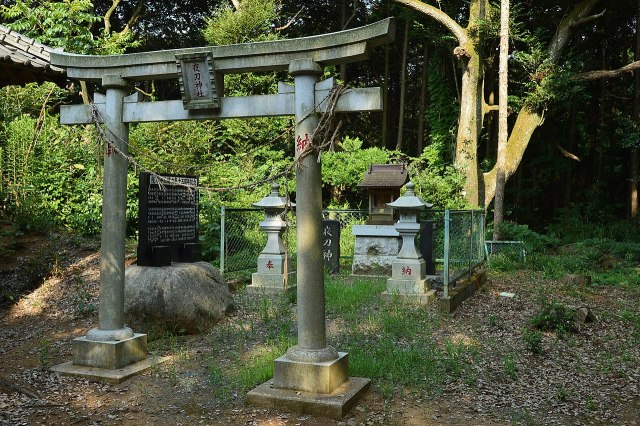
After many years later, another noble by the name of Mibu-no-Maro [壬生 麻呂] (circa Mid. 7th century AC) came to rule Hitachi-no-kuni [常陸国] (modern day most of Ibaraki Prefecture) as a statecraft ruler dispatched by Emperor Kōtoku [孝徳天皇] thus, Matachi’s rice fields and the land around it naturally became his property. There, Maro launched a project to construct an embarkment to better manage the water flow in the valley. Though the Yatsu-no-kami yet again disrupted the construction by loitering around the pond where the water for the rice fields was stored as they relaxed on the nearby chinquapin tree branches. After patiently waiting for them to leave, Maro finally had enough and shouted: “I’m trying to reconstruct this pond in order to improve the life of local people. Just what sort of deities refuses to obey the command of Imperial mandate?” Seeing that Yatsu-no-kami ignored his complaints, Maro summoned his subordinates and instructed: “Go through every grass and bushes and kill all creatures that dwells within.” Alas, Yatsu-no-kami were driven out from the pond and went to hiding. The pond that was then managed by Maro later came to be known as Shi'ii-no-ike [椎井池] which is today’s Tenryū-no-mitarashi [天龍の御手洗] (below) located within Tenryūzan-atago Shrine.
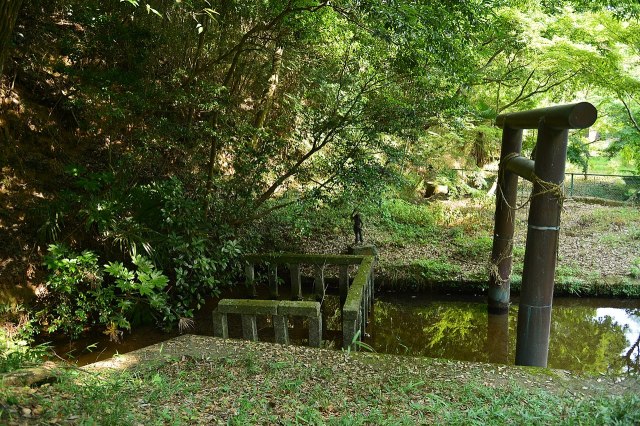
So what is the message that this legend of Yatsu-no-kami from “Hitachi-no-kunifudoki” trying to communicate? First of all, we know that these serpent deities were the lords of the valley within Mt. Tenryū because the word “yatsu” means “valley” in old East Japanese dialect¹, but why did Matachi venerate them while Maro didn’t? This is argued to be because the interaction between Matachi and Yatsu-no-kami in the legend was a metaphor of humanity overcoming the hardship placed by Nature where Matachi (as humanity) subdued Yatsu-no-kami (as Nature) by bringing the land under his control to exploit, but still recognized the volatile characteristics of Nature thus, attempted on comforting by enshrining the deities as a sign of respect and admiration². Where else for Maro, he only came to rule the place as that was his bureaucratic duty which made Yatsu-no-kami a nuisance that got in his way of fulfilling the divine Emperor’s request who was far more supreme than some minor, local deity and this attitude is also reflected in what Maro said to Yatsu-no-kami when he first confronted them unlike Matachi’s final speech².
Another notable feature in this legend is how a stick was used to mark boundaries which is something seen in other Japanese legends. This stick is technically known as Imizue [忌杖] and it also appears in the origin legend of Tadononyū Shrine [田殿丹生神社] (below) (Aridagawa Town [有田川町], Arida Dist. [有田郡], Wakayama Prefecture) where Nifutsuhime-no-mikoto [丹生都比売命] installed four sticks at the corners to mark the sanctuary of where the shrine stands today and began the process of reclamation from there³ just as Matachi split the land between Yatsu-no-kami and human.
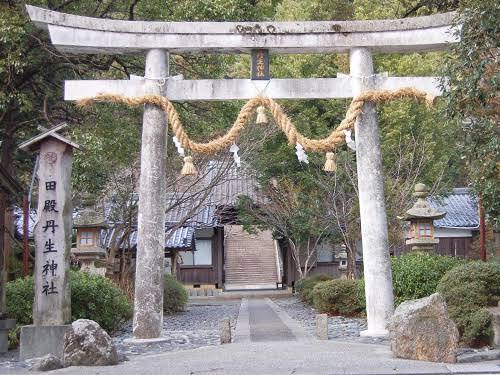
Sources:
1. “Kyōkai-no-hassei” [境界の発生] (2002) by Norio Akasaka [赤坂 憲雄] (1953-present)
2. “Bushi-no-genzō…” [武士の原像: 都大路の暗殺者たち] (2020) by Yukihiko Seki [関 幸彦] (1952-present)

